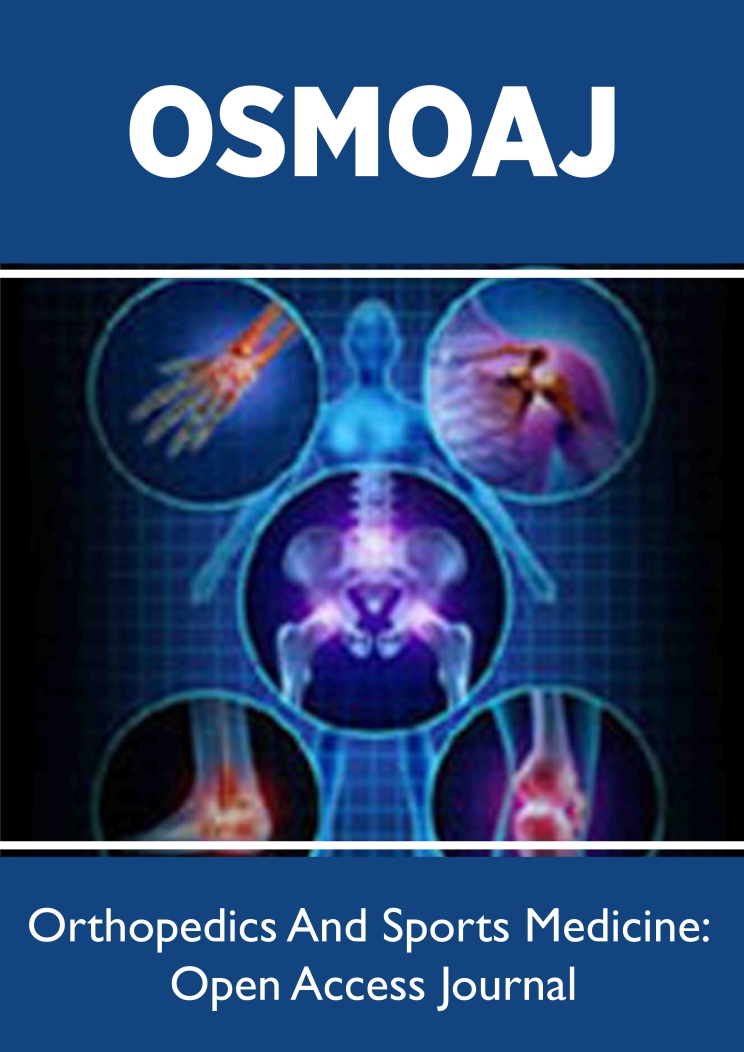
Lupine Publishers Group
Lupine Publishers
Menu
ISSN: 2638-6003
Mini Review(ISSN: 2638-6003) 
Bone Marrow Edema and Joint Overuse in Athletes: a Mini-Review Volume 4 - Issue 2
Tarantino U1,2, Primavera M1,2, Greggi C2,3,4, Iundusi R1,2, Gasbarra E1,2 and Gatti A1,2
- 1Department of Clinical Science and Translational Medicine, University of Rome Tor Vergata, Italy
- 2Department of Orthopedics and Traumatology, Italy
- 3Department of Biomedicine and Prevention, University of Rome Tor Vergata, Italy
- 4Medical Biotechnologies and Translational Medicine, University of Rome Tor Vergata, Italy
Received: May 17, 2020; Published: June 15, 2020
Corresponding author: Gatti A, Department of Clinical Science and Translational Medicine, University of Rome, Italy Department of Orthopedics and Traumatology, Italy
DOI: 10.32474/OSMOAJ.2020.04.000183
To view the Full Article Peer-reviewed Article PDF
Abstract
Bone marrow edema (BME) is defined as an area of low signal intensity on Tl-weighted MR images and associated with intermediate or high signal intensity findings on T2-weighted MR images. Although BME is clearly present at MRI in subjects who already experience joint pain, what makes it difficult to trace the origin of this clinical picture, and thus to establish the correct treatment, is the fact that BME is also found in asymptomatic patients. In fact, BME represents a typical imaging finding that characterizes stress-related bone injury, a common feature of athletes and military recruits, but also amateur athletes. There are several factors that contribute to the etiology of stress injuries, such as changes in an existing training regimen or, as is often seen in non-professional athletes, the undertaking of a new sport or activity. MRI plays a key role in the detection of bone abnormalities since this imaging technique allows detailed evaluation of BME as a consequence of physical performance. These bone changes detected at MRI can help in identifying the stress injuries at an early stage, and this is essential to avoid serious physical, professional, and financial consequences for professional athletes. The clinical significance of BME is still unclear, but it is important to correlate BME imaging findings with the clinical history of the patient and the specific sport performed; it is also crucial to clarify whether there is a specific threshold, during exercise-triggered bone remodeling, beyond which this condition degenerates into the clinical picture characterized by BME, pain and, in more severe cases, a stress fracture. This is necessary to help clinicians and trainees to ensure an accurate diagnosis and therapeutic treatment, and the proper workout adjustment respectively.
Keywords: Bone Marrow Edema; Magnetic Resonance Imaging; Athletes, Sport; Joint Overuse; Pain; Bisphosphonate
Abbreviations: BME: Bone Marrow Edema; BML: Bone Marrow Lesions; MRI: Magnetic Resonance Imaging; Pemfs: Pulsed Electromagnetic Fields; CPRS: Complex Pain Regional Syndrome.
Abstract| Bone Marrow Edema (BME): on overview| Non-Traumatic BME Onset| Etiopathogenesis of BME| BME and Pain| How Training Influence BME Size| Update On BME Therapeutic Management| Discussion: What Is New For The Clinician| Conclusions| Conflict of Interest| References|

Top Editors
-

Mark E Smith
Bio chemistry
University of Texas Medical Branch, USA -

Lawrence A Presley
Department of Criminal Justice
Liberty University, USA -

Thomas W Miller
Department of Psychiatry
University of Kentucky, USA -

Gjumrakch Aliev
Department of Medicine
Gally International Biomedical Research & Consulting LLC, USA -

Christopher Bryant
Department of Urbanisation and Agricultural
Montreal university, USA -

Robert William Frare
Oral & Maxillofacial Pathology
New York University, USA -

Rudolph Modesto Navari
Gastroenterology and Hepatology
University of Alabama, UK -

Andrew Hague
Department of Medicine
Universities of Bradford, UK -

George Gregory Buttigieg
Maltese College of Obstetrics and Gynaecology, Europe -

Chen-Hsiung Yeh
Oncology
Circulogene Theranostics, England -
.png)
Emilio Bucio-Carrillo
Radiation Chemistry
National University of Mexico, USA -
.jpg)
Casey J Grenier
Analytical Chemistry
Wentworth Institute of Technology, USA -
Hany Atalah
Minimally Invasive Surgery
Mercer University school of Medicine, USA -

Abu-Hussein Muhamad
Pediatric Dentistry
University of Athens , Greece

The annual scholar awards from Lupine Publishers honor a selected number Read More...

